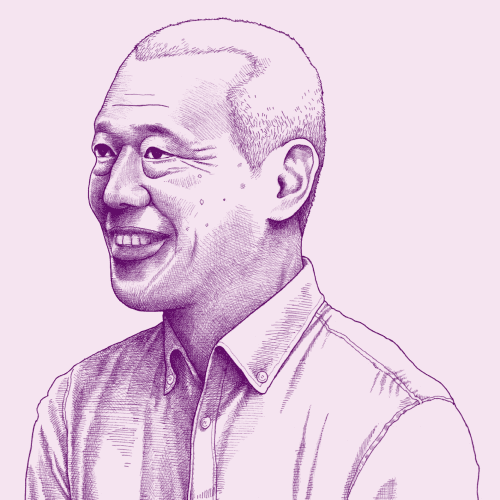Impact stats
Since April 2025, 20 user interviews conducted with 20 individuals across two work streams: helping applicants understand which type of leave to apply for and making it easier for organizations to request an exemption from the state PFML program
Summary
Since 2020, Nava has worked with the Commonwealth of Massachusetts Department of Family and Medical Leave (DFML) to help build and maintain the state’s first-ever paid family and medical leave (PFML) program. Throughout this project, DFML has upheld human-centered design (HCD) as an efficient and effective way to ensure their services meet the public’s needs. We’ve supported DFML as they conduct user research — a common practice in HCD — to help applicants understand which type of leave to apply for and to make it easier for eligible organizations to request an exemption from the state PFML program.
Simplifying how applicants apply for medical and family leave
When a Bay Stater gives birth, they’re eligible for medical leave and family leave to bond with their child. However, some applicants aren’t getting all the leave they’re entitled to because they aren’t opting into medical and family leave when they apply. When this happens, DFML staff must retroactively change claims, creating administrative burden for DFML staff and for applicants.
DFML’s goal is to help applicants choose the correct type of leave so they receive all the time they are eligible for. To ensure the service meets the public’s needs, DFML is leading several rounds of usability testing.
With DFML, we first mapped the flow through Massachusetts’ PFML application and identified points where applicants were getting stuck. Then, we used research DFML previously conducted to help prototype changes to the application’s language and flow. To ensure those changes increased applicants’ understanding of different leave types, we helped DFML conduct usability testing with six parents. During each interview, we collected information about the participant’s personal experiences taking PFML leave, and we observed them navigate the application prototype to understand whether the changes improved clarity.
We found that testing participants generally chose the correct leave type, but they were still confused about medical leave eligibility as well as how to update their baby’s due date after a birth. Equipped with these insights, we helped DFML iterate on the prototype. We helped DFML:
Add examples of when someone would qualify for each leave type
Refine the application’s questions that help applicants select the correct leave type.
Explore ways to reduce confusion around providing a due date
Make changes to clarify that giving birth qualifies for medical leave, explain the difference between medical and family leave, and encourage eligible applicants to apply for medical leave and add family leave to bond with their child.
To test these changes, DFML conducted a more targeted round of usability testing only on the pages they modified. By limiting scope, DFML was able to speed up the testing and analysis processes while ensuring the most critical changes would benefit applicants.
Testing participants still experienced confusion on two pages, so we’re going back to the drawing board with DFML. We’ll use insights from both rounds of usability testing to help DFML amend the portal, and then we’ll work with DFML to conduct more testing. DFML will continue to iterate until they can ship a process that’s clear, usable, and efficient. Ultimately, this will help applicants receive all the leave they’re eligible for while reducing burden on DFML staff.
Streamlining how employers apply for exemptions
Organizations that provide their employees with PFML benefits that are equal to or greater than the state’s program can apply for an exemption. Currently, employers apply for exemptions using a process that’s external to DFML’s systems. Similarly, DFML staff review exemption requests using external systems. We’re helping DFML rebuild and enhance these processes in their employer portal, which will ultimately improve experiences for employers and DFML staff.
Throughout this project, we’ve met regularly with DFML staff in cross-functional syncs. By sharing their expertise, DFML helped us understand their pain points and opportunities to improve the exemptions process. Together, we reviewed the design components and user flow of the existing exemptions process, and DFML shared employers’ anecdotal feedback on the process. This enabled us to help DFML craft various user personas and ideate design recommendations to meet users’ unique needs. As a result of this initial research, DFML decided that the ideal user experience would prioritize consistency, plain language, minimalism, and feedback on user actions.
Once we gained a foundational understanding of the exemptions process, we began to help DFML with preliminary designs for the new process. In designing the form that employers fill out to apply for an exemption, DFML was able to leverage many of the designs and best practices they established when building their PFML application for benefits. Though the exemption form serves a different user group, it must be clear and guided in the same way as the benefit application.
In building backend functionality to support exemptions, DFML was also able to pull from existing design research and patterns in the employer portal. That’s because the functionality within the employer portal focuses on enabling DFML staff to review and manage PFML applications. This isn’t changing; DFML is merely adding functionality for a new user group — exempt employers.
This helped accelerate the design process and enabled DFML to focus on providing an excellent service to employers. As we helped DFML iterate on the designs, we met continuously with experts at DFML and with other PFML designers within Nava. This enabled DFML to improve on the designs with every iteration.
To ensure the designs meet users’ needs, we helped DFML conduct several rounds of usability testing with employers and DFML staff. In usability testing, participants navigated different versions of a prototype in moderated sessions and shared their feedback on what worked and what didn’t.
DFML’s last step is piloting the new experience with a handful of employers. For the pilot, DFML will ask employers to log into the portal, verify access to their organization, and complete an exemption request. Once an employer completes the request, we’ll help DFML ensure all backend and connected systems are operating properly. This process will enable DFML to gather early feedback, test data integrations, and de-risk the exemptions process before they launch it to all employers.
Conclusion
User research is an excellent way to build digital services that meet peoples’ unique needs. DFML tapped Nava to help conduct user research for two workstreams — helping people apply for the correct leave types and making it easy for employers to claim exemptions. As a result of their user research practices, DFML is well on their way to delivering two excellent experiences that will benefit applicants, employers, and DFML staff.
Written by

Product lead

Designer and researcher

Designer and researcher

Designer and researcher

Senior Editorial manager
